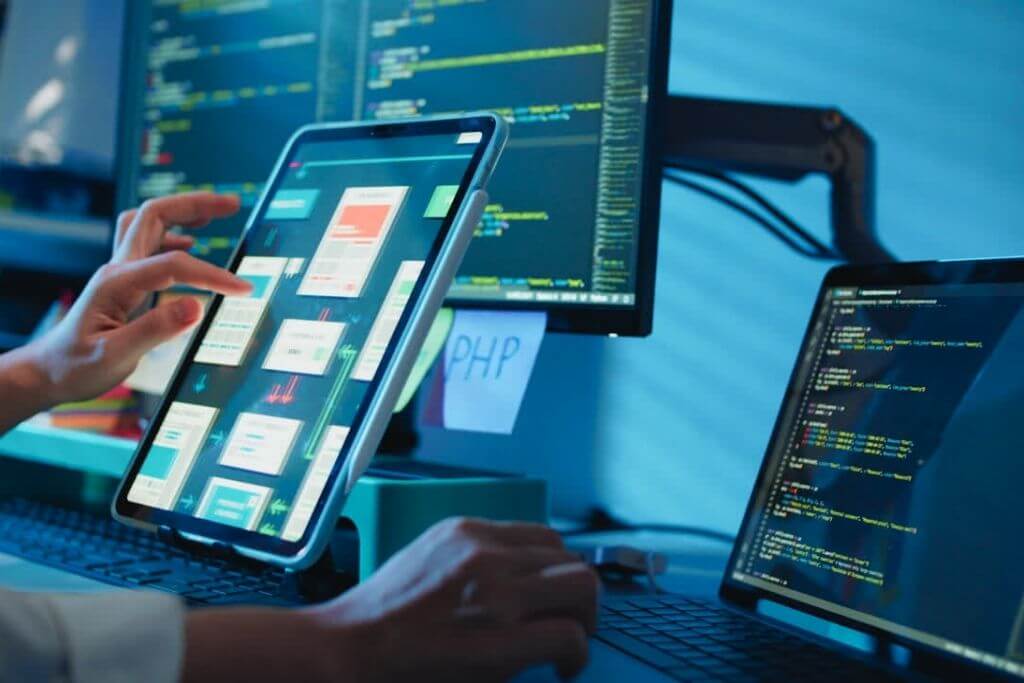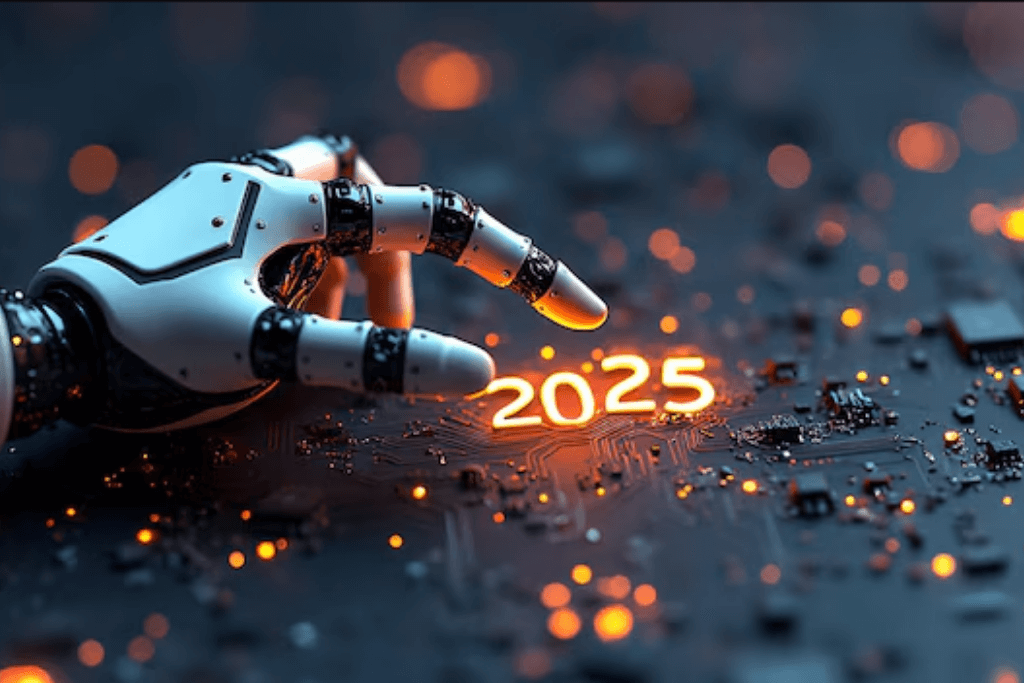Development of Robotic Systems with Artificial Intelligence

Development of Robotic Systems with Artificial Intelligence
Artificial intelligence and robotic technologies have been developing rapidly in recent years and provide significant convenience to people's lives. Thanks to artificial intelligence algorithms and robotic systems, productivity increases are achieved in many industries, while significant improvements are made in human services. In this context, the latest technological innovations used in the development of artificial intelligence and robotic systems will be examined and it will be explained how the developments in this field affect which sectors.
Usage Areas of Artificial Intelligence Algorithms
Artificial intelligence algorithms are used in many different sectors today. In the healthcare industry, artificial intelligence monitors the health status of patients, guides doctors and helps create treatment plans. In the education sector, artificial intelligence monitors students' educational processes and helps personalize learning materials. In the financial sector, artificial intelligence becomes an important tool for investors by managing financial risks. In the automotive industry, it helps to realize innovative projects such as artificial intelligence and self-driving technology.
In addition, artificial intelligence algorithms are used in air traffic control, security systems, agriculture, environmental protection and many other areas. Artificial intelligence helps solve complex problems that humans have been trying to solve for years, much faster and more efficiently.
Automation of Robotic Systems
Automation of robotic systems provides a great advantage for industrial enterprises. Businesses make their business faster and more efficient by using these systems. Automation of robotic systems can be used in any part of a business and often saves business owners significant time.
The use of these systems also helps businesses reduce their costs. Automation reduces costs by requiring fewer people than it needs manpower. Businesses can increase their profit margins by doing more with fewer workers.
In the future, it seems that the automation of robotic systems will become even more common. The emergence of Industry 4.0 means that multiple robots can communicate with each other and use each other as a team. This means increased use of robotic systems and further development of automation in any industry.
In summary, automation of robotic systems provides significant benefits for businesses. It helps businesses become more successful by increasing efficiency, reducing costs and saving time. Automation of robotic systems is expected to become more widespread in the future.
Industry 4.0 and Artificial Intelligence
Industry 4.0 refers to a period in which production processes are completely restructured with automation and digitalization. During this period, production processes are automated to provide greater efficiency and cost savings. At this point, artificial intelligence and robotic systems are the basic building blocks of industry 4.0.
Artificial intelligence and robotic systems, especially factory automation, are used to further optimize production processes and reduce costs. These technologies increase productivity and reduce the risk of occupational accidents, especially by reducing the role of operators in various industries.
In fact, production lines using artificial intelligence algorithms can become fully automated. In this way, businesses need less manpower and can achieve higher efficiency at lower cost.
However, the use of industry 4.0 and artificial intelligence is not limited to the production processes of enterprises. It also enables various industries to become more efficient by collecting data, analyzing it and using the results.
After all, the technological advances led by industry 4.0 are making a big wave in many industries thanks to the use of artificial intelligence and robotic systems. These technologies help companies operate more efficiently and profitably, and they will be further developed into many aspects of our lives in the future.
Biomedical Robotics
Biomedical robotics is the use of robotic systems in medical surgical procedures. These robots can be remotely controlled and accurately adapted to the human body, providing flexibility and precision during surgical intervention. This technology reduces the risks of surgical methods and accelerates the post-treatment recovery process.
The areas of use of biomedical robots are not limited to surgical treatments. These robots are also used in medical research, medical diagnostics and infection control. Robots can also assist with biopsy procedures and assist with less invasive procedures.
In the near future, the usage areas of biomedical robots may expand even more. The use of these robots for cancer treatment, heart disease and other serious medical conditions may be more frequent. The development and improvement of robots will contribute to the further advancement of medical technology and the improvement of human life.
Robot Couriers for Instant Delivery
Robot couriers for instant delivery have been used by many e-commerce companies in recent years. These robots aim to provide customers with a fast and easy delivery. Most robots are designed specifically for handling cargo boxes and packages. Generally, these robots, which act like people walking on the street, can go to the destination they have determined thanks to their navigation systems.
One advantage of these robots is that they are not affected by heavy traffic and bad weather conditions. Thus, deliveries can be carried out smoothly even in bad weather conditions. Additionally, these robots help make deliveries more efficient. Because deliveries are better planned, less time and resources are spent and companies get a financial advantage.
Many robotic courier systems are designed as unmanned aerial vehicles (drones) or small vehicles. In some systems, customers can choose their own delivery time and the robots will deliver on the specified date. This allows customers to set a suitable time for their business or other activities.
However, for robotic courier systems to succeed, they may face some hurdles. For example, the navigation systems of robots are not perfect and they may encounter some obstacles during their journey. They move a few meters away to avoid people, but they should still take safety precautions.
Artificial Intelligence and Manufacturing Process
Artificial intelligence algorithms are widely used in production processes. Thanks to these algorithms, robotic systems become more efficient in production. The use of artificial intelligence in production processes has led to a 90% reduction in defective products. In addition, businesses have become more efficient by automating important processes such as stock management and supply chain management.
In addition, the combination of industrial robots with artificial intelligence algorithms has increased the speed and efficiency in production. These robots allow to produce higher quality products by taking the workload of production from people.
The increase in productivity in production with the use of artificial intelligence algorithms helps businesses to gain more profit and increase their competitiveness. In addition, thanks to the automation in the production processes, occupational accidents are also reduced.
Next Generation Robotic Systems
New generation robotic systems emerge with the combination of technologies such as the development of robotic systems, artificial intelligence and machine learning. These systems mean robots that can interact better with humans and act smarter. As a result, humans can work more efficiently with robots.
Another feature of the new generation robotic systems is that they can undertake complex tasks. These systems can be highly effective in a competitive industry and business world. For example, large companies such as Amazon are now expanding the use of robotic systems and deploying them in their distribution centers.
The usage areas of the new generation robotic systems are quite wide. In the agricultural sector, robots can harvest or scan farmland. In the healthcare industry, robots can perform surgeries or transport patients. In the construction industry, robots can perform work at height or maintain structures. These robotic systems are starting to be used in all areas of our lives and will become even more common in the future.
- Features of new generation robotic systems:
- Smart movement
- Better interaction
- Take on complex tasks
- Usage areas of new generation robotic systems:
- Agriculture
- Health
- Building
- Potential future uses:
- Security
- Entertainment
- Trade
Drones
Drones have started to be used in many industries besides their recreational use. It provides great convenience especially in agriculture, construction and logistics sectors. In the agricultural sector, for example, drones can monitor the growth stages of plants, detecting fertile soils and the presence of plant diseases. In the construction industry, drones are used to construct buildings faster and more accurately. In the logistics sector, drones are used for package deliveries, and provide great convenience in the delivery of emergency medical supplies. In the future, there are many potential uses for drones, such as environmental protection, emergency disaster response, and even person transport services.
Service Robots
Service robots are robotic systems that have entered people's lives in recent years and are used in many areas. These robots are often used for housework and cleaning. Service robots, which also help disabled individuals, are also used in hospitals.
The technological features of service robots are also quite advanced. Thanks to sensors, cameras, motion detectors and artificial intelligence algorithms, these robots are very smart and can successfully perform tasks that need to be done at home or in the hospital. In addition, some service robots can also be controlled by voice commands.
The potential usage areas of service robots are quite wide. In the future, these robots can be used in many areas, from household chores to more demanding tasks. For example, they can assist rescue teams in disasters such as fire or earthquake. They can also be used in demanding industrial jobs.








